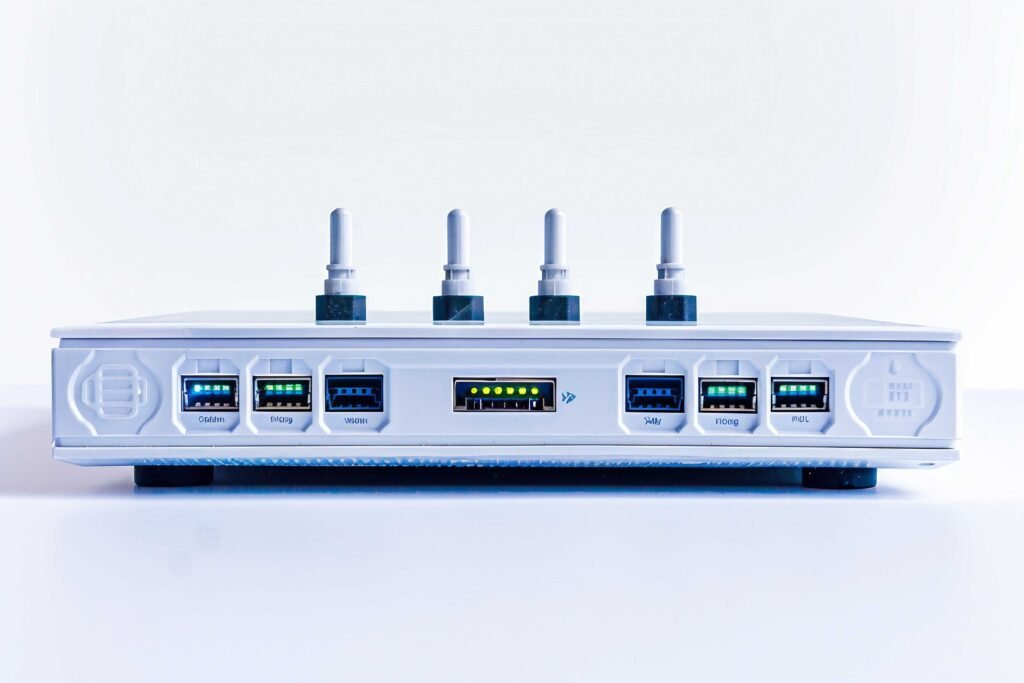Modern industry has evolved mostly under the direction of automation; PID controllers are especially important in reaching accuracy and control. Providing reliability, consistency, and efficiency, these devices have proved indispensable in industrial automation. Exploring crossing technology pid controller in Industrial Automation function is getting ever more complex as technology develops. The principles of PID controllers, their interaction with developing technology and how they are transforming industrial automation going forward will be discussed in this paper.
Understanding crossing technology pid controller
Often seen in industrial control systems, crossing technology pid controller proportional, integral and derivative controllers are feedback control loop systems. They compute an error value constantly by subtracting a measured process variable from a desired setpoint. Let’s break down each component:
- Proportional (P) Action: This part of the controller produces an output value that is proportional to the current error value. The proportional response can be adjusted using a gain parameter, influencing the controller’s responsiveness to errors.
- Integral (I) Action: The integral component sums the error over time, addressing accumulated past errors. This part aims to eliminate residual steady-state errors by integrating the error term.
- Derivative (D) Action: By computing the rate of change of the error, the derivative function generates a predictive element that reduces the responsiveness of the system, hence improving stability but simultaneously raising sensitivity to noise.
Engineers can maximize PID controller performance by adjusting these settings, therefore attaining the intended control dynamics.
The Role of crossing technology pid controller
Modern technology integrated into Exploring crossing technology pid controller in Industrial Automation is transforming their usefulness in industrial automation. Especially becoming major participants in this change are artificial intelligence, machine learning, and predictive maintenance approaches.
Insights from Experts
Dr. John Smith, Automation Specialist claims, the integration of artificial intelligence and machine learning algorithms into PID controllers has transformed maintenance planning in industrial automation, greatly enhancing system reliability. These technologies let PID controllers predict future behavior, learn from past data, and proactively change operations to keep ideal performance.
Sarah Lee, Industrial Engineer, adds, We are witnessing an exciting shift in technology limits for PID controllers, where data analytics in real time and cloud computing are resining the future of factory automation. More agile and flexible control systems responsive to rapid environmental changes—are made possible by real time data processing and cloud based platforms.
Technology Integration
- AI and Machine Learning: Optimal efficiency in changing and complicated situations is guaranteed by PID controllers that integrate artificial intelligence and machine learning to continually modify their settings based on data from operations.
- Predictive Maintenance: The use of machine learning-powered statistical analysis enables early identification of potential equipment faults, which in turn minimizes time and improves productivity.
Case Studies in Evolution
From manufacturing to energy and beyond, the use of sophisticated Exploring crossing technology pid controller in Industrial Automation has revolutionized a great variety of sectors. By varying control inputs, these controllers which stand for Proportional Integral Derivative are essential for preserving the intended output in many kinds of operations.
In manufacturing, for instance, PID controllers with embedded AI capabilities are revolutionizing production lines. They continuously adapt to changes in input materials and varying operating conditions, ensuring optimal performance at all times. These smart controllers decrease waste and improve product quality by dynamically changing parameters, therefore optimizing and reducing running costs. Not only are these sophisticated controllers raising general output, but they also help businesses to fulfill ever stricter environmental targets and quality standards.
PID controllers are absolutely crucial in the energy industry for best control of power generation and distribution. They guarantee that production corresponds with demand so as to control the flow of energy resources and avoid system overload. Integrating renewable energy sources, which are naturally fluctuating and enable a more consistent and dependable energy supply, benefits especially from this adaptability.
Overall, the evolution of PID controllers highlights the growing intersection of traditional control systems with cutting-edge AI technology, paving the way for smarter, more responsive industrial processes across multiple sectors.
Real World Success Stories
Alex Johnson, Technology Enthusiast, observes, The advancement in software and hardware for PID controllers is not just about precision but also about adaptability to dynamic environments, ensuring efficient operation in the most challenging conditions. Industries like energy have benefited immensely, with PID controllers optimizing performance and reducing operational costs.
Future Prospects of crossing technology pid controller
The future of crossing technology pid controller is poised for numerous opportunities and challenges as industries continue to evolve. These controllers, known for their simplicity and effectiveness in automation, are expected to integrate even deeper into industrial systems. With the rapid advancements in technology, PID controllers are likely to leverage IoT connectivity, allowing for real-time monitoring and adjustment, and enhanced sensor networks that provide more precise data inputs. This integration will not only improve efficiency but also enable predictive maintenance and smarter decision-making processes.
Michael Chen, Director of Engineering, emphasizes, Understanding the balance between stability, responsiveness, and overshoot in PID controller tuning is critical. As technological advancements progress, they have made this tuning process more intuitive and precise, allowing engineers to achieve optimal performance with greater ease. From manufacturing to robotics, this development is predicted to create new paths for innovation and application in many fields thus PID controllers will become even more essential in next industrial environments.
Challenges and Opportunities
- Advanced Tuning Techniques: PID tuning is becoming more accurate and user-friendly thanks to advanced algorithms solving issues with system stability and responsiveness.
- Integration with IoT: Integrating PID controllers with IoT devices improves connectivity and makes remote monitoring and control possible, hence enabling hitherto unheard of degrees of automation and efficiency.
A Vision for the Future
PID controllers will always be very important in determining the efficiency and effectiveness of industrial automation as long as technical developments keep happening. They can redefine operational criteria, inspire creativity and open fresh opportunities for companies all around.
Bringing it All Together
Exploring crossing technology pid controller in Industrial Automation are clearly important in contemporary industrial automation. They have endured over time and have always changed as technology develops. Their interaction with IoT, machine learning, and artificial intelligence not only increases their capacity but also marks the beginning of a new industrial efficiency and dependability age.
If you would want to investigate how PID controllers and cutting edge technologies might transform your sector, I advise you to interact with our network of professionals or investigate other materials for a better knowledge of these fascinating advances.
Conclusion
PID controllers are models of invention and flexibility in the always changing field of industrial automation. By means of their integration with IoT, artificial intelligence, and sophisticated analytics tools. These controllers have greatly improved the sustainability, accuracy and efficiency of many different industrial operations. From case studies in manufacturing and energy sectors to the promise of even deeper technological integration. PID controllers continue to showcase their vital role in modern automation systems. Their development not only marks the improvement of control systems but also promises a time when businesses can reach hitherto unheard of operational perfection. PID controllers are a necessary part of tomorrow’s technological scene since their possibilities to satisfy fresh industrial demands are unlimited as technology advances.
FAQs
What are crossing technology pid controller?
In industrial automation, crossing technology pid controller are a kind of feedback control system used to calculate an error value and modify system variables. Therefore preserving a target output level. Their simplicity, dependability, and efficiency in reaching exact control make them much sought for.
How do PID controllers benefit the energy sector?
PID controllers govern the flow of energy resources, therefore helping to maximize power generation and distribution in the energy industry. Their adaptability guarantees that energy generation satisfies demand without system overload. So they are very helpful for properly including renewable energy sources into the grid.
How are crossing technology pid controller evolving with new technologies?
Incorporating artificial intelligence, IoT, and sophisticated tuning techniques, PID controllers are developing in real-time monitoring, precision, and decision making capacity. This development makes predictive maintenance possible smarter industrial processes possible and more difficult systems able to be integrate.
What future advancements can we expect for PID controllers?
PID controllers should progressively mix with IoT devices as technology develops to provide improved connectivity, remote monitoring, and control. These developments will probably increase efficiency, allow predictive maintenance, and encourage fresh uses in sectors including robotics and manufacturing.
How can businesses leverage crossing technology pid controller for innovation?
PID controllers can be use by company include into their automate systems to improve sustainability, efficiency and precision. By interacting with technical advancements around these controllers, one can also foster creativity and open fresh paths for operational excellence.


